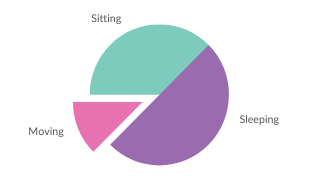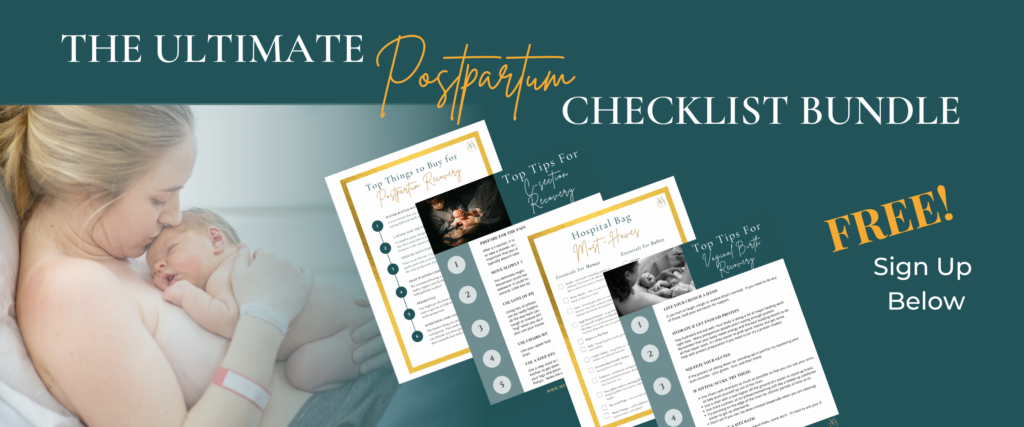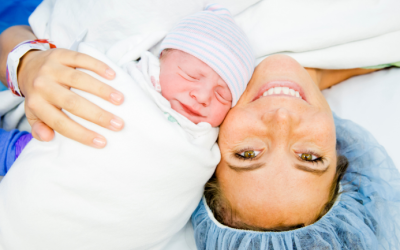What Is Pelvic Girdle Pain?
During pregnancy, pelvic girdle pain (PGP) refers to pain anywhere in and around the bony pelvis (want to know more about PGP? Check out our previous article to learn about what it is, what it feels like, and what causes it).
Pelvic girdle pain can show up in many areas/ways and may include:
- Pubic bone pain – often called symphysis pubis dysfunction (SPD)
- Groin pain or pain down the inner thighs
- Hip pain on one or either side of the pelvis
- Lower back pain or sacro-iliac (SI) joint pain
- Buttock, tailbone or pelvic floor pain
PGP during pregnancy can be common, but you don’t have to suffer! Pain is changeable.
Here are two simple tips that can help relieve your pain in pregnancy:
1. Sit with WIDE legs
This may seem counterintuitive at first (especially when your pubic symphysis hurts), but check out the following video for the details or read on below.
In this video I pay a little homage to my roots by wearing a cowboy hat (I come from a family of Albertans and my folks live in a small town where people still wear cowboy hats and sometimes even still ride their horses to the grocery store…). I’m wearing the hat to help you remember wide cowpoke legs (like you are riding a horse!) for sitting when you pain during pregnancy.
Think of the hat = horse = wide knees = channel your inner cow-person 😉
When your knees go wide, your thigh bones (femurs) come together towards the back and help compress and give more support to the pelvis. This is important because as your pregnancy progresses, your pregnancy hormones continue to soften the ligaments that hold the bony pelvis ring together. As this softening happens, your pelvis joints are becoming more mobile in preparation for birth (in the back at your SIJ joints, and in the front at your pubic symphysis). This can result in pain for some people. Using wide knees could help support these more-mobile joints, and help us to feel more comfortable.
Creative options for wide-legged sitting could include:
- Scoot to the front of a tall-backed or hard chair and perch on the edge, knees wide
- No lady-like crossing of the knees; (this gets hard as a pregnancy belly grows anyway); if you are a habitual crosser, try crossing at the ankle and let your knees relax out wide
- You could also try crossing one ankle to rest on the opposite knee; if you choose this option, just make sure you also spend time with the other leg up to encourage variety and balance for your system
- Sit on the floor or the couch with crossed-legs like the kindergartners (criss, cross, applesauce!); remember to switch your cross from time to time
- You could also sit with one foot/ankle tucked up in your groin area or slightly under your bum (knee out to the side)
- Try sitting with wide legs on an exercise ball
Remember: Channel your inner cow-person. 😉
2. Sleep with your knees apart too – try a yoga bolster or a rolled-up quilt
The wide-legged theme continues… but consider again which activities and patterns your body spends the most time in. If you think of your day as a 24-hour pie chart, sleep takes up a substantial portion of that chart, night after night. It could be having a big influence on your pregnancy related pelvic girdle pain both in the moment (especially if you can’t find a comfortable position to sleep in), but possibly also the next day.

To lend the pelvis a bit more support, it might feel better to keep your knee at the same level as the top of your pelvis. With the knee supported higher in this way, the thigh bone (or femur) can’t pull down as much on the pelvis bones. This added support could feel better both for the SI joints in the back and the pubic bone in the front.
One commonly recommended fix is simply to put a pillow between your knees.
This might help as you will add a little more distance between your knees; if you have a fat pillow, it might even get you up high enough to match the level of the top of the pelvis. However, pillows are typically soft and squishy! Through the course of the night they could compress. By the end of the night your knees might not be apart at all anymore… and with a pillow it’s pretty easy to just slip forward into that knee-down position.
Another common remedy suggested is a pregnancy pillow.
In the video I show one that is often touted to be better because it supports more body parts. Supposedly you can support your head and neck, and you can even put your belly on there if you need a little belly support. It also has a piece that wraps around behind that you can put your knees on. Although it might appear comfy to start though, pregnancy pillows are often still really squishy. They can still compress and your knee might slip down and forward uncomfortably, with less support for the pelvis.
Instead, my favourite thing to recommend for sleeping during pregnancy is a yoga bolster.
I find bolsters are better because they are dense; they don’t compress with the weight of the leg through the course of the night. You can bring your top knee and shin up to be fully supported. With this kind of support, its not as easy to roll forward. This way the SI joints could feel more comfortable in the back, and the pubic symphysis could be less compressed in the front.
I totally understand that not everyone may want to go out and get a yoga bolster, so you can also do a quick fix with a quilt.
- Choose a quilt that has been stitched (not a fluffy comforter)
- Roll it up to the height you want (with a blanket, you have the opportunity to roll more up if you need more height, or use a smaller one if you need less height).
- Tape it with duct tape to prevent it from unrolling
A quilt should be more dense than a pillow, and it will hold its shape better through the night. This roll can be used the same way as a yoga bolster.
Finally, some people find they just can’t get comfortable with something between their knees.
If this is you, you’re not alone. One small trick: tweak how you stack your knees to be more supportive for your pelvis. Stack the top knee about an inch behind the bottom one, and then take your top foot and drop it down to rest on the bed behind the bottom leg. This slight outward rounding of your upper thigh (external rotation of the femur) might lend a little more support to your pelvis and feel good. (Experiment with this one for a couple of nights, it can take time for your body to get used to a new pattern; however, its more comfortable, your body will likely adapt quickly). If this is hard to imagine, watch the video above.
To summarize tips for sleeping when you have PGP during pregnancy:
-
Try to keep some space between your knees
-
Ditch the soft pillow between your knees and try a yoga bolster or rolled up quilt instead
-
If that doesn’t work, try adapting how you stack your legs
Test out these options when you have pain in pregnancy and let us know what you think! Whether you notice pelvic pain, low back pain, or pain in your pelvic floor or at your symphysis pubis – experiment to see if changing your sleeping and sitting patterns can provide some relief!
~Mandy




